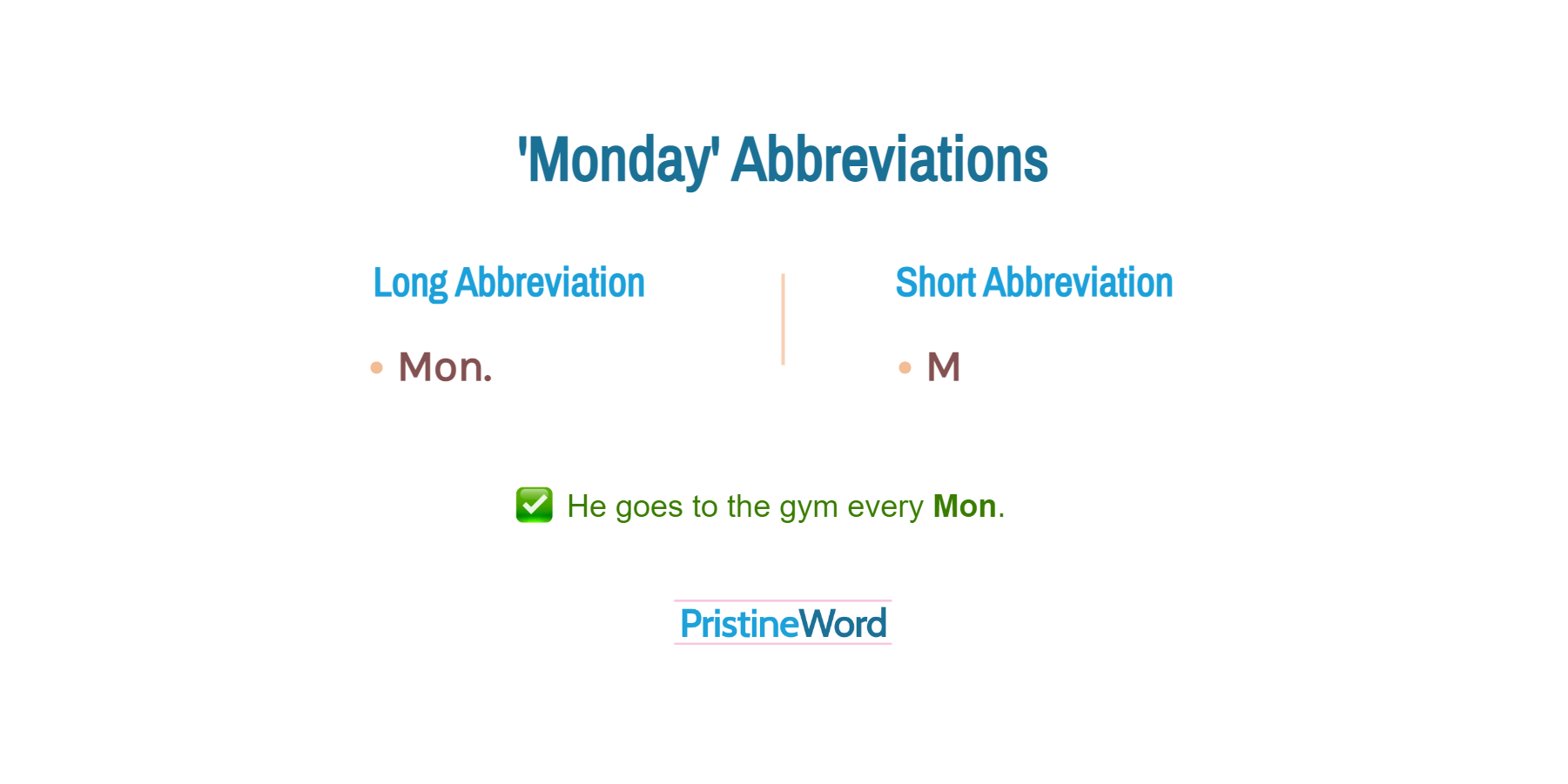There are two ways to abbreviate "Monday": Long abbreviation (Mon.) and Short abbreviation (M)
There are two ways to abbreviate "Monday":
-
Long abbreviation (Mon.)
The surgical procedure was performed last Mon.
-
Short abbreviation (M)
Next meeting on M
Due to their widespread usage, both abbreviations, "Mon." and "M", are commonly used in every English-speaking country, including the US, the UK, Australia, New Zealand, Canada, and South Africa.
Alice was born on Mon./Monday.
However, use the shortest form only if space is limited, for example, in quick notes, charts, tables, or illustrations. In any case, ensure it is obvious to users which day you are referring to.
Alice was born on M.
Do you need a period after Mon? MLA style recommends adding a period if the abbreviation ends in a lowercase letter (e.g., Mon.) while avoiding punctuation in abbreviations composed solely of capital letters (M in this context).
The meeting is scheduled for 09:00 on Mon./M in the office.
And remember, we always capitalize Monday, even if it is abbreviated.
On Mon., Olivia has a doctor's appointment.
On mon., Olivia has a doctor's appointment.
Follow the same abbreviation strategy with the rest of the days of the week:

